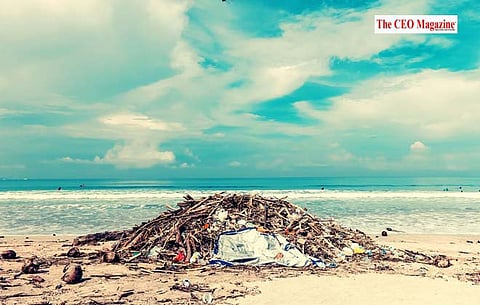
- News
- Women
- Magazine
- IndustryIndustry
- InsightsInsights
- Success Stories
- PublishPublish
- ContactContact
- Media KitMedia Kit

We are in 2020, and still dealing with the blasphemous ignorance towards the legitimate concern of water crisis, Ironical!
We do not realize that as the world population is increasing by the day, so is the need to sustain large communities as well as increasing. Since 1993, United Nations, each year has been celebrating world water day focusing on the importance of freshwater pushing awareness among people about the other half of the world with more than 2 billion people living without access to basic water facilities.
The world is not in a state of celebration of the world water day, we are in a state of crisis, and it is high time we realize that and start acting upon it. Of course, the future is unpredictable, but logic isn't, and years of study, science, and basic environmental understanding suggest loud and clear that the water levels are decreasing and the demand is growing. The shortage of water is no joke and it is causing a problem to millions of people every day.
The CEO Magazine, this 22nd March on World Water Day requests you to do your bit, save what is going to save you in the future. Water is a need, let's save it before it turns into luxury. Here are a few facts pooled from various sources (Websites) on the internet to open your eyes towards the saddening truth of water crisis we don't talk much about;
By 2020 approximately 30-40% of the world will face water scarcity, and according to the researchers, climate change will make this all the more worse.
Since there are only 7% of the freshwater of the world in China, they alone are planning to produce 807 million gallons of water in a day from desalination by the year 2020 which is roughly quadruple of the country's existing capacity.
By the time we reach 2025, an estimated 1.8 billion people will carry on in areas weighed down by water scarcity, with two-thirds of the world's population living in the areas with scarce water.
There will be more than 1 billion more mouths to provide for worldwide by the year 2025 and global agriculture unaccompanied will necessitate another 1 trillion cubic meters of water each year (equivalent to the yearly flow of 20 Niles or 100 Colorado Rivers).
UN has pulled out studies that depict a scenario in the future of 30 nations that'll be water scarce in 2025, up from 20 in 1990.
By the reports released through the U.S. Intelligence Community Assessment of Global Water Security, by the year 2030 humanity's "yearly worldwide water requirements" will surpass "the existing sustainable water supplies" by the margin of 40%.
Since the future depicts an increase in the global middle-class section from 1.8 to a mighty 4.9 billion by 2030, which will add an increase in freshwater utilization.
The demand for water in India will increase by a whopping 1.5 trillion cubic meters in 2030 while the available water supply will only be 740 billion cubic meters.
If in the due course of time, the trends of using water do not change, the world will be left with only 60-% of the water in comparison to what it actually needs by 2030.
By the year 2035, the world's energy expenditure will augment by 35 percent, which will boost water use by 15 percent according to the reports by the International Energy Agency.
If we continue spending water like we are today, we would not be left with sufficient water in the world to satiate the thirst of the world population and keep the existing energy and power solutions going.
There will be an increase in the count of people surviving under harsh water tension which would get to 3.9 billion by the year 2050, adding it all to 40% of the world's inhabitants.
Where we have reached today, by the year 2050, five times of the existing land is likable to face extreme drought problems.
To feed approximately 9 billion people, it will take a minimum of 60 percent raise in agricultural manufacture and a 15 percent rise in water extraction.
The demand for water is estimated to increase by 55 percent by 2050 (as well as a 400 percent increase in mechanized water demand).
By the year 2050, 1 in each of 5 developing nations will be face-to-face with a harsh water shortage condition according to the reports released by the UN's Food and Agriculture Organization.
Between 2050 and 2100, there is an 85 percent probability of a drought in the Central Plains and the South-western United States that would last a minimum of 35 years or more.
If the farmers in Kansas City continue the irrigation methods the same as presently more than 60 percent of the Ogallala Aquifer will not exist in the coming 50 years.
Follow us on Google News
